Squirrels are playful animals, always curious and full of life. They love to climb, jump, and scamper around, bringing smiles to our faces with their funny antics. They come in many different kinds, with around 268 species in total.
So, come along on a journey to learn more about these furry friends who brighten our days and make the world a little bit more fun.
Key takeaways:
- Squirrels are small rodents ( members of the family Sciuridae) with bushy tails, measuring 8 to 12 inches in length, found in various habitats worldwide.
- Common squirrels are skilled climbers and build nests called dreys in trees.
- They primarily feed on nuts, seeds, fruits, and vegetation, but can also consume insects, bird eggs, and small vertebrates if necessary.
- They are known for their energetic and acrobatic behavior, foraging for food, and engaging in territorial behaviors.
- They typically breed twice a year, with gestation periods varying by species.
- Squirrels are also appreciated for their playful antics and contribution to ecosystem health through seed dispersal.
History and Origin

The word “squirrel” has an intriguing backstory that starts way back in ancient Greece with “skiouros,” a term cleverly combining “skia” (shadow) and “oura” (tail).
It perfectly captured how squirrels love lounging in the shade of their bushy tails! Fast forward through history, and we see this term evolving into “squirrel” in Old English and “squirrel” in Middle English before shaping into the word we know today.
This linguistic journey isn’t just about words; it’s a tale of our fascination with these cute, furry critters that scamper around our parks and neighborhoods, weaving through the fabric of human culture for centuries.
Throughout history, squirrels have held a special place in human society. In ancient times, they were often depicted in art and mythology as symbols of agility, resourcefulness, and cleverness. In European folklore, squirrels were sometimes associated with woodland spirits or even considered messengers of the gods.
During the Middle Ages, squirrels became prized for their fur, which was used to make luxurious garments. Wealthy individuals would often adorn themselves with squirrel fur trim, showcasing their status and wealth.
As exploration and trade expanded in the Renaissance era, squirrels gained even more prominence. European explorers encountered new species of squirrels in the Americas and other regions, marveling at their diversity and behavior. Squirrels became exotic curiosities and were sometimes kept as pets by the nobility.
In the 18th and 19th centuries, squirrels continued to capture the imagination of writers, artists, and naturalists. They were featured in children’s stories, poems, and scientific studies, further embedding themselves into the cultural tapestry of the time.
With the rise of urbanization in the 20th century, squirrels adapted to living in human-altered landscapes. They became a familiar sight in parks, gardens, and suburban neighborhoods, charming residents with their acrobatic antics and playful demeanor.
Today, squirrels remain a beloved part of our natural and cultural heritage. Whether they’re darting across city streets or foraging for nuts in the forest, these charismatic creatures continue to enchant and inspire us, reminding us of our deep connection to the natural world.
Common Characteristics
Squirrels have a variety of fur colors and patterns, including gray, brown, reddish-brown, and black.
They have a compact body shape with a small head, slender limbs, and a bushy tail, varying significantly depending on the species. The distinctive tail, long and bushy, covered in dense fur, serves various functions, including balance, communication, and insulation.
Squirrels are well-adapted for arboreal life, with strong, muscular limbs with sharp claws, long, more powerful hind limbs, and keen eyesight and depth perception.
Their size can range from smaller species like the African pygmy squirrel to larger species like the eastern gray squirrel, which can reach up to 18 inches.
Their tail serves various functions, such as providing balance during climbing and jumping, acting as a signaling device, and providing insulation during colder months.
Squirrels are known for their adaptability and survival skills, exhibiting various traits and activities. They are active foragers, constantly searching for food sources like nuts, seeds, fruits, and vegetation.
Behavior
They are territorial creatures, marking their territory with scent markings and vocalizations. Squirrels communicate with each other through various vocalizations, body language, and tail movements.
They are renowned for their agility and precision in navigating tree branches, and exhibit caching or hoarding behavior, where they bury surplus food items for later retrieval.
This helps them survive during food scarcity and contributes to forest regeneration by dispersing seeds. Squirrels typically breed twice a year, with females giving birth to kits or pups, which they raise in dreys.
They can be both admired and considered pests in urban and suburban areas, causing occasional conflicts with humans. However, they are also appreciated for their playful antics and contribution to ecosystem health through seed dispersal.
Types of squirrels
There are many types of squirrels, but they can generally be categorized into three main groups: tree squirrels, ground squirrels, and flying squirrels.
Here is a list of some common types of squirrels found around the world:
- American Red Squirrel (Tamiasciurus hudsonicus)
- Fox Squirrel (Sciurus niger)
- Western Gray Squirrel (Sciurus griseus)
- European Red Squirrel (Sciurus vulgaris)
- Eurasian Red Squirrel (Sciurus vulgaris)
- Flying Squirrel (Various species)
- Indian Giant Squirrel (Ratufa indica)
- African Pygmy Squirrel (Myosciurus pumilio)
- Brazilian Squirrel (Sciurus aestuans)
Eastern Gray Squirrel (Sciurus carolinensis)
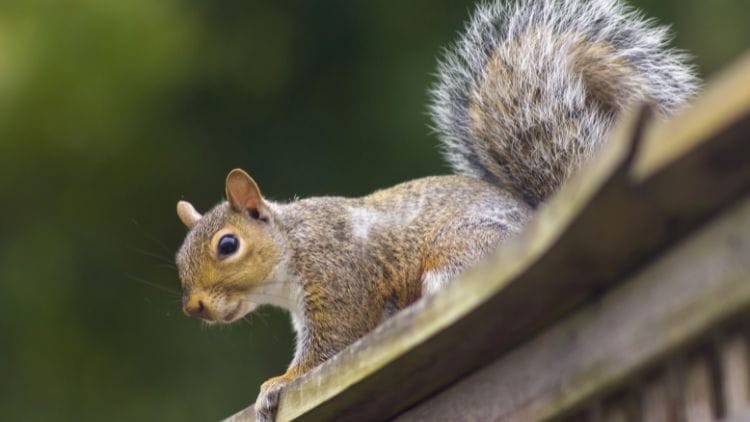
Native to North America, this species is known for its gray fur and bushy tail. It is commonly found in forests, parks, and urban areas.
American Red Squirrel (Tamiasciurus hudsonicus)
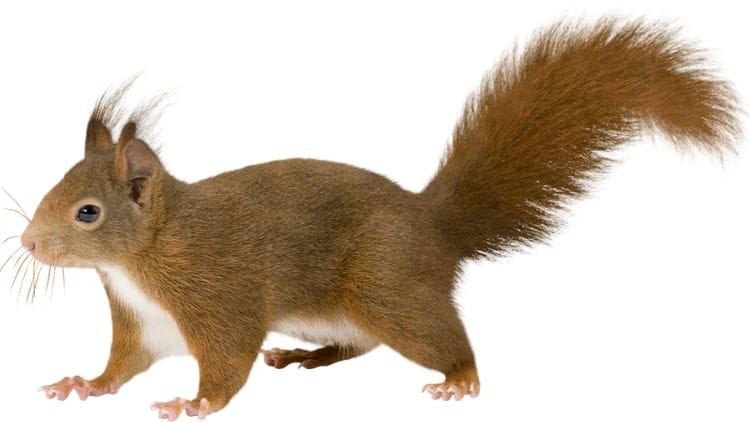
Also native to North America, this squirrel is smaller than the eastern gray squirrel and has reddish fur. It inhabits coniferous forests and is known for its vocalizations.
Fox Squirrel (Sciurus niger)
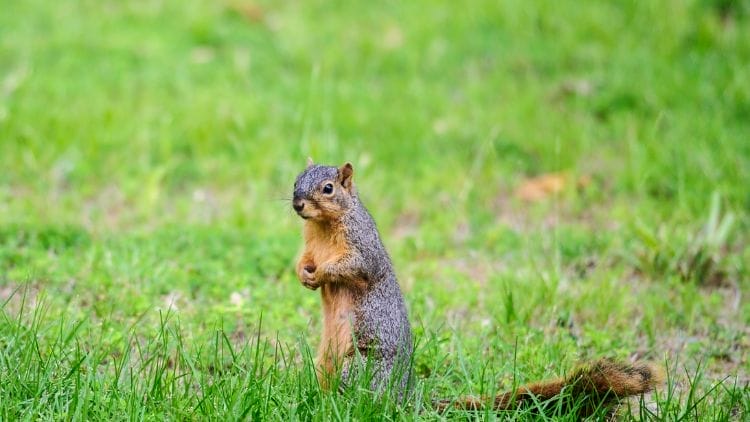
Found throughout North America, the fox squirrel is larger than the eastern gray squirrel and has a more reddish-brown fur coloration. It inhabits a variety of habitats, including forests, parks, and suburban areas.
Western Gray Squirrel (Sciurus griseus)

Native to the western United States, this squirrel has gray fur with a hint of brown and a distinctive white underside. It prefers coniferous and mixed forests.
European Red Squirrel (Sciurus vulgaris)
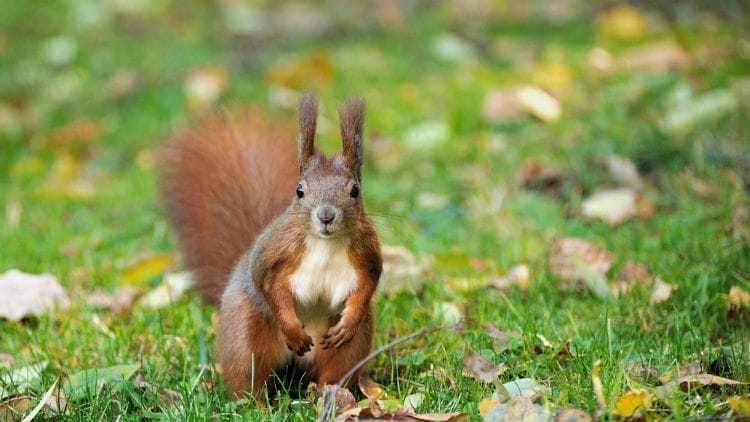
Found throughout Europe and parts of Asia, this species is known for its reddish-brown fur and tufted ears. It inhabits forests and woodlands.
Eurasian Red Squirrel (Sciurus vulgaris)

Similar to the European red squirrel, this species is found across Europe and Asia. It has a wide range of fur color variations, including red, gray, and black.
Flying Squirrel (Various species)

Flying squirrels are found in various parts of the world, including North America, Europe, and Asia. They have a loose fold of skin between their front and hind legs that allows them to glide from tree to tree.
Indian Giant Squirrel (Ratufa indica)
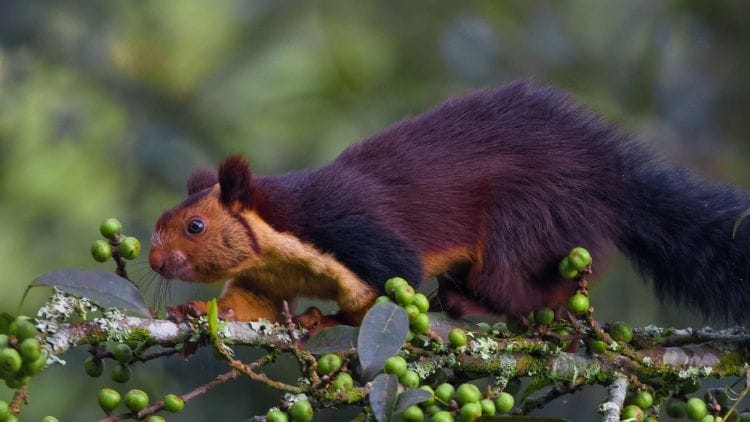
Native to India, this species is one of the largest squirrels in the world, known for its vibrant fur colors and long, bushy tail. It inhabits forests and woodlands in the Indian subcontinent.
African Pygmy Squirrel (Myosciurus pumilio)
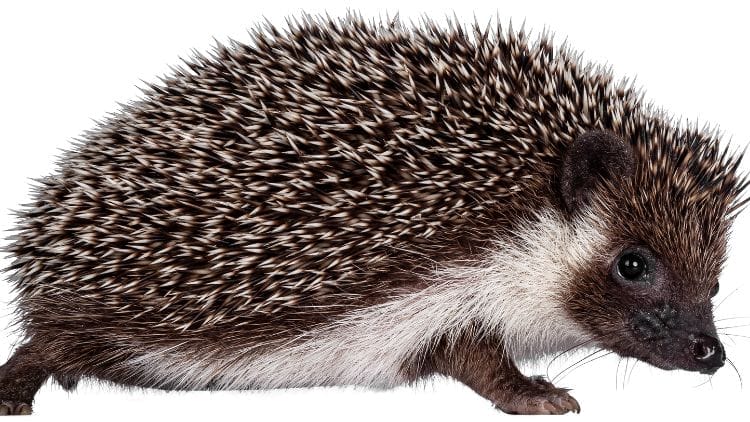
Found in tropical forests across central and western Africa, this tiny squirrel has a distinctive reddish-brown fur coloration and is one of the smallest squirrel species.
Brazilian Squirrel (Sciurus aestuans)

Native to South America, this species is found in tropical forests and has a grayish-brown fur coloration with a lighter underside.
Habitat
Squirrels, much like humans, exhibit a remarkable diversity in their choice of habitats, seamlessly adapting to a wide array of environments.
Whether it’s the bustling urban landscapes, serene forests, or quaint suburban neighborhoods, squirrels have carved out their niche, making themselves at home amidst the greenery and trees.
Their global presence spans continents, with different species inhabiting various regions worldwide. From the eastern gray squirrels frolicking in North American parks to the red squirrels darting through the woodlands of Europe, these furry creatures have established themselves as familiar sights across the globe.
When it comes to nesting, squirrels display resourcefulness akin to human DIY enthusiasts. Crafting their homes, known as dreys, high up in the tree branches using natural materials, they create cozy retreats to weather the elements and raise their young.
Yet, they’re not opposed to seeking refuge in more unconventional spots, from burrows in the ground to attic spaces in human dwellings. In many ways, the behaviors and preferences of squirrels mirror our own, reminding us of the interconnectedness between humans and the natural world.
Location
Squirrels are a diverse species found in various habitats worldwide, including forests, urban parks, suburban neighborhoods, wooded areas, parks and gardens, and rural areas.
They are well-adapted to arboreal life, making homes in tree cavities, leaf nests, or dreys. They are also found in urban areas, where they exploit human-made structures and natural features.
Suburban neighborhoods with a mix of residential and green spaces provide ample food sources and nesting sites. Wooded areas with a mix of trees and undergrowth provide ideal habitats for squirrels, with deciduous and coniferous woodlands inhabiting different species and local environmental conditions.
Public parks, botanical gardens, and private gardens often support thriving squirrel populations, offering a mix of trees, shrubs, open spaces, and human amenities.
Squirrels are also found in rural areas with scattered trees and hedgerows, and agricultural landscapes with patches of woodland or riparian vegetation can provide important habitat corridors for squirrels to move between foraging areas.
Overall, squirrels are incredibly adaptable creatures that thrive in diverse locations worldwide.
Taxonomy
Geographic Distribution And Nationality
The geographic distribution of squirrels varies depending on the species, with different types of squirrels inhabiting different regions of the world.
For example, North America is home to a diverse array of squirrel species, including the eastern gray squirrel, fox squirrel, red squirrel, and various types of ground squirrels.
Europe is inhabited by species such as the red squirrel (Eurasian red squirrel), European ground squirrel, and various types of flying squirrels.
Asia boasts a wide range of squirrel species, including the Indian giant squirrel, the Japanese giant flying squirrel, and various types of tree squirrels found in forests across the continent. Africa is home to species such as the African pygmy squirrel and various types of tree squirrels found in the continent’s forests.
Similarly, South America is rich in squirrel diversity, with species such as the Amazon dwarf squirrel, Brazilian squirrel, and various types of tree squirrels inhabiting the region’s forests.
As for nationality, squirrels themselves do not have nationality as it is a human concept related to citizenship and belonging to a specific country. Squirrels are wild animals and are not affiliated with any human nationality.
However, they do inhabit specific geographic regions and may be associated with the countries or regions where they are found.
Food and Diet
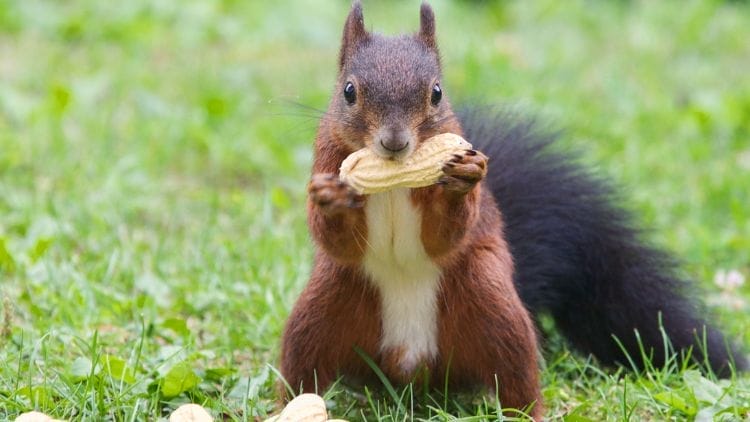
SquirSquirrels are opportunistic omnivores, meaning they have a varied diet consisting of both plant and animal matter. In the wild, their menu includes nuts, seeds, fruits, berries, insects, eggs, and even small vertebrates like birds or rodents.
In captivity, they may be fed a diet comprising nuts, seeds, fruits, and vegetables, and occasionally supplemented with protein sources like mealworms or cooked eggs.
However, fluctuations in food availability can significantly impact squirrel populations. Competition for limited resources intensifies during times of scarcity, such as harsh winters or habitat destruction.
This can lead to decreased reproductive success, higher mortality rates, and even population declines. Squirrels rely on abundant food sources to sustain their energetic lifestyle and reproductive needs, making them vulnerable to environmental changes and habitat degradation.
Conservation efforts aimed at preserving their natural habitats and ensuring food availability are crucial for maintaining healthy squirrel populations.rels exhibit a feeding behavior that’s almost like a never-ending quest for the perfect meal, embodying an antithesis to the picky eaters among us.
They’re like culinary adventurers, always on the lookout for new flavors and textures to tantalize their taste buds. While they have their favorites—nuts, seeds, fruits, and veggies—they’re not ones to turn down a tasty morsel, even if it’s something unexpected. It’s like they’re at a food festival, eagerly sampling everything from bird feeders to fallen fruits with gusto.
Their feeding antics are a blend of finesse and determination, as they skillfully crack open nuts or delicately pluck berries from branches with their nimble paws.
And just like some humans have a habit of stocking up on snacks for a rainy day, squirrels are notorious hoarders, squirreling away extra nuts and seeds in hidden caches for later munching.
It’s a behavior that’s both thrifty and resourceful, ensuring they never go hungry even when food is scarce.
In the grand tapestry of nature, squirrels play a vital role as both epicureans and environmental stewards, showcasing the beauty of diversity in the animal kingdom.
Reproduction and Life Cycle

The circle of life—squirrels have their own version of this timeless tale, complete with romance, family, and the pitter-patter of tiny paws.
Just like humans, they have their seasons for love, with breeding typically occurring twice a year: in late winter or early spring, and again in midsummer.
It’s like they’ve got their own little family planner, scheduling their romantic rendezvous for optimal times of the year.
Once the sparks fly and courtship rituals are complete, female squirrels give birth to litters of adorable offspring, known as kits or pups. It’s like a squirrel baby boom, with litters ranging from two to eight little ones, depending on the species and environmental factors.
The proud parents then set about the task of raising their brood, providing warmth, protection, and nourishment in cozy nests called dreys. It’s a whirlwind of activity as the young squirrels grow and explore their surroundings, learning the ropes of survival from their doting parents.
And just like any growing family, there comes a time when the young ones strike out on their own, venturing forth into the world to find their own place in the sun. It’s a cycle that repeats itself year after year, a testament to the resilience and beauty of life in all its forms.
Ecological Importance
In the intricate web of ecosystems, squirrels play a crucial role as nature’s gardeners and seed dispersers, embodying a vital link in the chain of life.
Much like busy workers in a bustling city, squirrels tirelessly collect nuts, seeds, and fruits, helping to maintain the balance of plant populations and promote biodiversity.
Their voracious appetite for seeds and nuts not only ensures their own survival but also plays a key role in the dispersal of seeds across vast distances. It’s like they’re nature’s postal service, delivering parcels of potential life to new territories and helping to regenerate forests and woodlands.
But their impact extends beyond mere seed dispersal. Squirrels are also part of the menu for many predators, from birds of prey to foxes and snakes, helping to sustain a diverse array of wildlife communities. It’s like they’re the cornerstone of a thriving ecosystem, providing sustenance for countless other species in the intricate dance of predator and prey.
Moreover, their burrowing activities aerate the soil and contribute to nutrient cycling, enriching the earth and supporting the growth of plant life. They’re like little earthworms, toiling away beneath the surface to create a healthier environment for all.
Squirrels are the unsung heroes of the natural world, quietly going about their business but playing a crucial role in maintaining the delicate balance of ecosystems. From forests to urban parks, their presence is a testament to the interconnectedness of all living things and the beauty of nature’s intricate tapestry.
Human-Squirrel Interactions
The curious dance between humans and squirrels—a tale as old as time, filled with moments of wonder, frustration, and occasional hilarity. Like neighbors sharing a backyard fence, humans and squirrels often find themselves in close proximity, navigating a delicate balance of coexistence.
For many, squirrels are cherished members of the community, their playful antics providing entertainment and joy.
It’s like having a troupe of furry comedians, putting on a show with their acrobatic leaps and mischievous antics.
Some humans even go the extra mile, setting up bird feeders and squirrel-proofing their gardens to ensure their bushy-tailed friends have a steady supply of snacks.
But for others, squirrels can be a source of frustration, their voracious appetites and penchant for mischief causing occasional headaches. It’s like a battle of wits as humans employ various strategies—from squirrel baffles to ultrasonic deterrents—in an ongoing game of cat and mouse (or rather, human and squirrel).
Yet, amidst the occasional frustrations, there’s a recognition of the important role squirrels play in the ecosystem. They’re like furry ambassadors, reminding us of the interconnectedness of all living things and the importance of biodiversity.
Human-squirrel interactions reflect the complex relationship between humans and the natural world—a relationship filled with moments of awe, frustration, and ultimately, a shared appreciation for the wonders of nature.
Threats and Conservation
Amid urban sprawl and habitat fragmentation, squirrels face an array of threats that challenge their survival in the modern world. From loss of habitat due to deforestation and urban development to encounters with vehicles and domestic pets, squirrels navigate a landscape fraught with danger.
Furthermore, pollution and environmental contaminants pose additional risks to squirrel populations, impacting their health and reproductive success. Climate change also looms large as a threat, altering habitats and disrupting food sources, placing further strain on squirrel populations already struggling to adapt.
But amidst these challenges, efforts are underway to conserve and protect squirrel species and their habitats. Conservation organizations work tirelessly to preserve natural areas and create wildlife corridors, providing safe havens for squirrels to thrive. Education initiatives raise awareness about the importance of coexisting with wildlife and implementing sustainable practices to mitigate human-wildlife conflicts.
Additionally, research into squirrel ecology and behavior informs conservation strategies, helping to identify key habitats and prioritize conservation efforts. Citizen science projects engage the public in monitoring squirrel populations and contributing valuable data for conservation efforts.
Ultimately, the fate of squirrels—and indeed, all wildlife—rests in our hands. By working together to address threats, implement conservation measures, and foster a culture of respect and stewardship for the natural world, we can ensure that squirrels continue to delight us with their playful antics for generations to come.
Fun Facts
Here are some fun facts about squirrels:
- Squirrels belong to the family Sciuridae, which includes tree squirrels, ground squirrels, chipmunks, marmots, and prairie dogs.
- There are over 200 species of squirrels worldwide, found on every continent except Antarctica.
- The word “squirrel” comes from the Greek word “skiouros,” which means “shadow-tailed,” referring to the bushy tails that cast shadows.
- Squirrels’ front teeth never stop growing, so they must constantly gnaw on objects to keep them from becoming too long.
- They have excellent vision and a wide field of view, allowing them to detect predators from a distance.
- Squirrels are incredibly agile and can leap distances of up to 10 times their body length.
- Some species of squirrels can glide for long distances using a membrane of skin called a patagium that stretches between their limbs.
- Squirrels are known for their hoarding behavior, often burying nuts and seeds for later consumption. However, they don’t always remember where they’ve hidden their food, which helps with seed dispersal and tree planting.
- Ground squirrels hibernate during the winter months, while tree squirrels remain active year-round, relying on stored food and insulated nests to survive the cold.
- Squirrels have a diverse diet that includes nuts, seeds, fruits, insects, eggs, and even small vertebrates.
- Despite their small size, squirrels play a crucial role in forest ecosystems by dispersing seeds and creating small disturbances that promote tree growth.
Final Words
In the big picture of nature, squirrels are like the friendly neighbors we all love to see around. They hop, jump, and play in our parks, forests, and even our cities, spreading joy wherever they go. With their fluffy tails and curious antics, they remind us of the magic of the natural world.
But squirrels are more than just cute—they’re also important for keeping our ecosystems healthy. They scamper around, spreading seeds and nuts, helping plants grow and forests thrive. It’s like they’re nature’s little gardeners, working behind the scenes to make our world a better place.
So let’s cheer for our furry friends, and remember to look out for them as we all share this planet together. With a little care and kindness, we can ensure that squirrels—and all creatures—continue to brighten our days for years to come.
FAQ
Why are squirrels called squirrels?
The word “squirrel” comes from the Greek word “skiouros,” which means shadow-tailed. It is believed to refer to the bushy tail that casts a shadow over the squirrel’s body.
What do squirrels do?
Squirrels are small mammals known for their agility and tree-dwelling habits. They spend much of their time foraging for food, caching food for later consumption, and building nests.
Can squirrels eat meat?
While squirrels are primarily herbivores, they are known to occasionally consume insects, small birds, and bird eggs, especially when other food sources are scarce.
What are some interesting facts about squirrels?
Squirrels have excellent spatial memory and can remember the locations of thousands of buried nuts. Some species of squirrels can glide through the air using a membrane between their legs, allowing them to travel between trees.
Squirrels’ teeth never stop growing, so they must constantly gnaw on objects to keep them from becoming too long.
What does a squirrel eat?
Squirrels primarily eat nuts, seeds, fruits, and fungi. They have a varied diet depending on the season and availability of food.
Why squirrels are so cute?
Squirrels are often considered cute due to their fluffy tails, large eyes, and agile movements.
Are squirrels intelligent?
Squirrels are considered intelligent animals, capable of problem-solving and remembering complex routes to food sources.
How do squirrels protect?
Squirrels protect themselves from predators by fleeing, hiding in trees or burrows, and using their agility to evade capture.
What are the good qualities of a squirrel?
Some of the positive qualities of squirrels include their adaptability, agility, and role in dispersing seeds, which helps to regenerate forests.
What do squirrels see?
Squirrels have good vision, which is important for navigating their environment and locating food sources.
Are squirrels friendly?
Squirrels are typically wary of humans but can become accustomed to their presence, especially in urban areas where they may even approach humans for food.
What is a squirrel’s favorite food?
Squirrels have a preference for nuts such as acorns, walnuts, and hazelnuts, but they also eat seeds, fruits, and fungi.
How do squirrels like to eat?
Squirrels often sit on their hind legs while holding food in their front paws, using their sharp incisors to crack open nuts and seeds.
Is it safe to touch squirrels?
It’s generally not recommended to touch wild squirrels as they can carry diseases and may bite if they feel threatened.
How do squirrels sleep?
Squirrels sleep in nests made of leaves and twigs, usually located high up in trees. They are diurnal animals, meaning they are most active during the day and sleep at night.
What can squirrels teach us?
Squirrels can teach us about resourcefulness, persistence, and the importance of preparation for the future.
Are squirrels male or female?
Squirrels have both male and female individuals, like most mammals.
Does a squirrel lay eggs?
No, squirrels give birth to live young. They do not lay eggs.
Do squirrels have 4 legs?
Yes, squirrels have four legs like most mammals.
How big is a squirrel?
The size of a squirrel can vary depending on the species, but they generally range from about 5 to 36 inches (13 to 91 centimeters) in length, including their tail.
Do squirrels mate for life?
Squirrels typically do not mate for life. Mating behaviors vary among species, but generally, they form temporary pair bonds during the breeding season.
How many teeth do squirrels have?
Squirrels have four sharp incisors in the front of their mouths that they use for gnawing and cracking open nuts.
Do squirrels have rabies?
While it’s possible for squirrels to contract rabies, it is relatively rare. Most squirrels are healthy and do not carry the disease.
Are squirrels a problem?
While squirrels can sometimes be considered pests, particularly when they damage property or raid bird feeders, they also play important roles in ecosystems.
Why do squirrels nest?
Squirrels build nests, called dreys, for shelter and protection from predators. Nests also provide a safe place for raising their young.
Who discovered squirrels?
Squirrels have existed for millions of years, so there is no specific person credited with their discovery. They are common animals found in many parts of the world.


You May Also Read